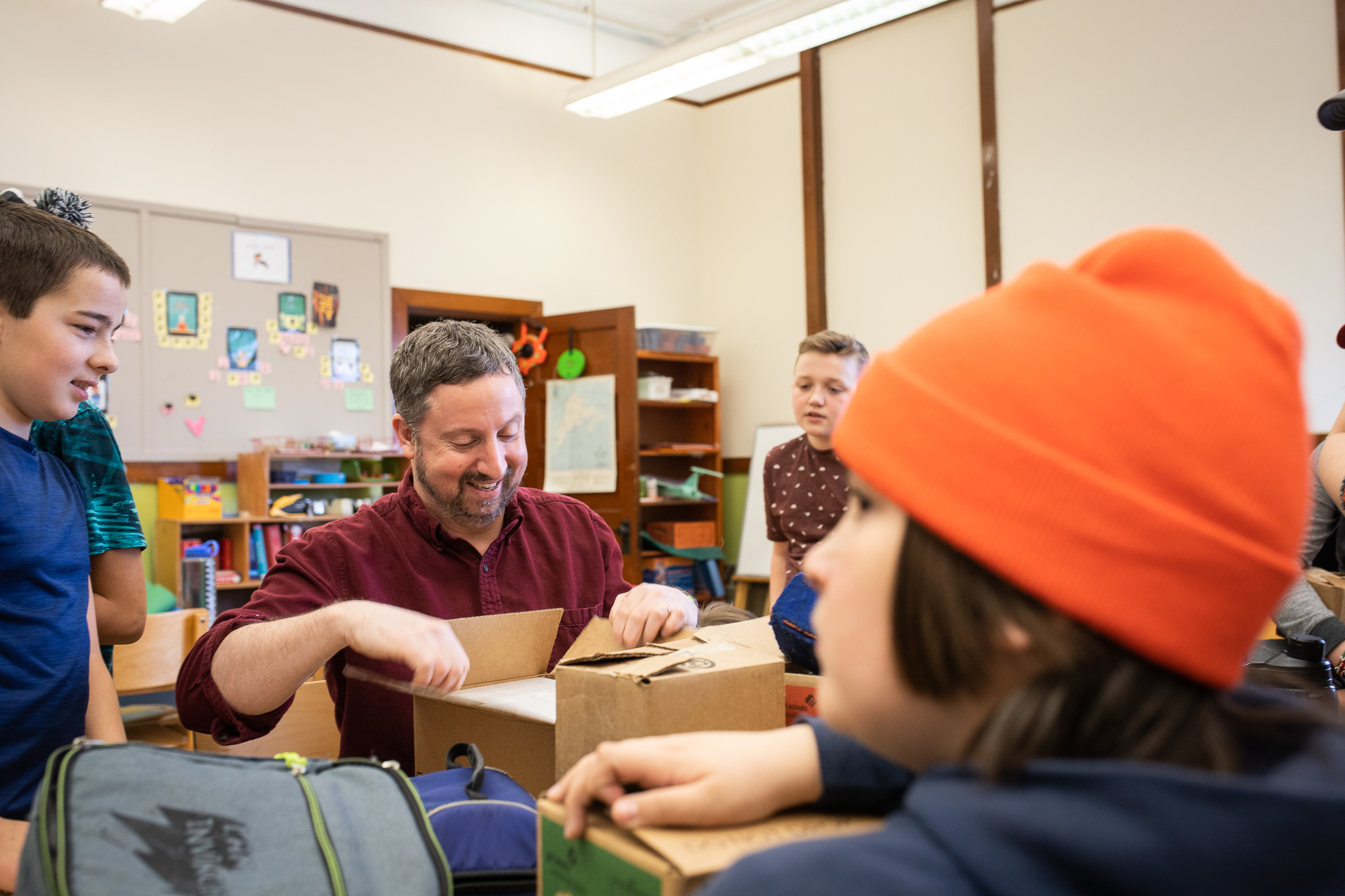Learning About Density in 5th and 6th Grade
/Tom Fisher, 5th and 6th Grade Teacher, explains below about a new unit of study. Specifically, students are playing around with the idea of density. Using concrete examples (sometimes literally) students demonstrate their understanding so that they can confidently articulate the concept of density as they move into deeper scientific exploration.
5th and 6th grade students have recently started an Integrated Studies unit about myths and science. Students will study the structure of myths and eventually write their own myths about natural phenomenon of their own choosing. They will simultaneously write a short research report about the scientific explanation of the same natural phenomenon. For example, a child might end up writing a myth about why volcanos erupt while also writing a research paper about tectonics and how that leads to volcanic eruptions. Students will spend part of each week studying science and part of each week studying mythology.
As we start the science part of the unit we are working on building scientific context that will allow them to understand the subjects they end up studying for their reports. We are trying to make certain that students not only know about these concepts, but understand them deeply in a concrete way. For example, it's hard to understand weather systems and tectonics without understanding convection. It's hard to understand convection without understanding the manner in which temperature affects density, and all of that is meaningless if you don't understand what density is. As adults we tend to have an easier time taking in a large amount of new information at once, organizing it, and making sense of it. For children it is vital that they deeply understand a concept before they are asked to use that concept in the service of understanding something new.
With that in mind we studied density this week. Our students already had a good understanding of what density means. They recognized that it is different than weight and said things like, "It's how much stuff is smooshed into a space." We gave them the challenge of working with a partner or two to pick a cardboard box and make it as dense as possible. They traveled around the campus finding objects to put in their boxes. At this point they all put together their boxes. We measured them and weighed them. We have not yet answered the question of which one is the most dense. Asking how we will determine that will lead to the understanding that density is a ratio of weight to volume. As we proceed to our next concepts, we are confident that the word density will be tangible to the children, not just conceptual. Here are some quotes we heard during this activity:
"Should we use a smaller box and put a smaller amount of really dense stuff in it?"
"That one weighed the most, but it's not necessarily the most dense."
"I wonder which is denser, this rock or this brick?"
Stay tuned to continue to learn about the ways, fifth and sixth grade students learn about and apply new science concepts. This week, they will spend some time understanding pressure by measuring the circumference of a balloon and checking on one placed inside the building, and one outside on the playground. We look forward to sharing their results with you.

















